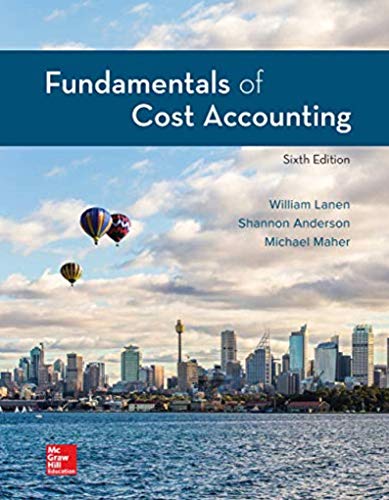
Concept explainers
What are the advantages of the contribution margin format based on variable costing compared to the traditional format based on full absorption costing?
Explain the advantages of contribution margin based on variable costing compared to the full absorption costing.
Explanation of Solution
Variable costing:
Under variable costing format, the fixed cost is used as the period cost and does not vary with the volume of production of units.
Absorption costing:
Under absorption costing, manufacturing costs incurred are allocated to the units produced by a particular company. In this method, the cost of goods manufactured includes direct materials, direct labor, and factory overhead costs. Fixed factory overhead and variable factory overhead are included as a part of factory overhead.
The advantage of using contribution margin format over traditional format:
Under absorption costing, the fixed costs are allocated to the units based on per unit basis. In case, when all the units produced are sold, then the whole fixed cost will be charged to the revenue or profit earned. In order to spread the fixed cost to more production units allocated towards the inventory as the variable costing. In this process, inventory is ignored while calculating contribution margin. Thus, unnecessary production of goods can be eliminated. Hence, the contribution margin format is more advantageous when compared to the traditional format based on absorption costing.
Want to see more full solutions like this?
Chapter 16 Solutions
Fundamentals Of Cost Accounting (6th Edition)
- Financial Accounting Question no. 2 : You own 560 shares of Maslyn Tours stock that sells for $64.57 per share. If the stock has a dividend yield of 3.7 percent, how much do you expect to receive next year in dividend income from this investment? a. $1,337.89 b. $1,382.49 c. $1,303.05 d. $1.486.54 e. $1,421.51arrow_forwardWhat is champion total assets turnover?arrow_forwardPlease provide correct answer general Accountingarrow_forward
- At the beginning of the year, Crane Ltd. had total assets of $710,000 and total liabilities of $400,000. If Crane's total assets decreased by $90,000 during the year and shareholders' equity increased by $125,000, what is the amount of total liabilities at the end of the year?arrow_forwardHi teacher please help me this question general accountingarrow_forwardGive me Answerarrow_forward
- Calculate the contribution margin and operating income for June using variable costing. Begin by selecting the labels and entering the amounts to compute the contribution. Then, select the labels and enter the amounts to compute the operating income Net Sales Revenue $ 7,50,000 Variable Cost of Goods Sold 2,55,000 Fixed Cost of Goods Sold 1,90,000 Variable Selling and Administrative Costs 1,72,000 Fixed Selling and Administrative Costs 83,000 Variable Costing Contribution Margin Operating Incomearrow_forwardLCM rules. Find General Account Solution.arrow_forwardKindly help me with accounting questionsarrow_forward
 Cornerstones of Cost Management (Cornerstones Ser...AccountingISBN:9781305970663Author:Don R. Hansen, Maryanne M. MowenPublisher:Cengage LearningPrinciples of Accounting Volume 2AccountingISBN:9781947172609Author:OpenStaxPublisher:OpenStax College
Cornerstones of Cost Management (Cornerstones Ser...AccountingISBN:9781305970663Author:Don R. Hansen, Maryanne M. MowenPublisher:Cengage LearningPrinciples of Accounting Volume 2AccountingISBN:9781947172609Author:OpenStaxPublisher:OpenStax College Managerial AccountingAccountingISBN:9781337912020Author:Carl Warren, Ph.d. Cma William B. TaylerPublisher:South-Western College Pub
Managerial AccountingAccountingISBN:9781337912020Author:Carl Warren, Ph.d. Cma William B. TaylerPublisher:South-Western College Pub Survey of Accounting (Accounting I)AccountingISBN:9781305961883Author:Carl WarrenPublisher:Cengage Learning
Survey of Accounting (Accounting I)AccountingISBN:9781305961883Author:Carl WarrenPublisher:Cengage Learning Financial And Managerial AccountingAccountingISBN:9781337902663Author:WARREN, Carl S.Publisher:Cengage Learning,
Financial And Managerial AccountingAccountingISBN:9781337902663Author:WARREN, Carl S.Publisher:Cengage Learning, Principles of Cost AccountingAccountingISBN:9781305087408Author:Edward J. Vanderbeck, Maria R. MitchellPublisher:Cengage Learning
Principles of Cost AccountingAccountingISBN:9781305087408Author:Edward J. Vanderbeck, Maria R. MitchellPublisher:Cengage Learning





